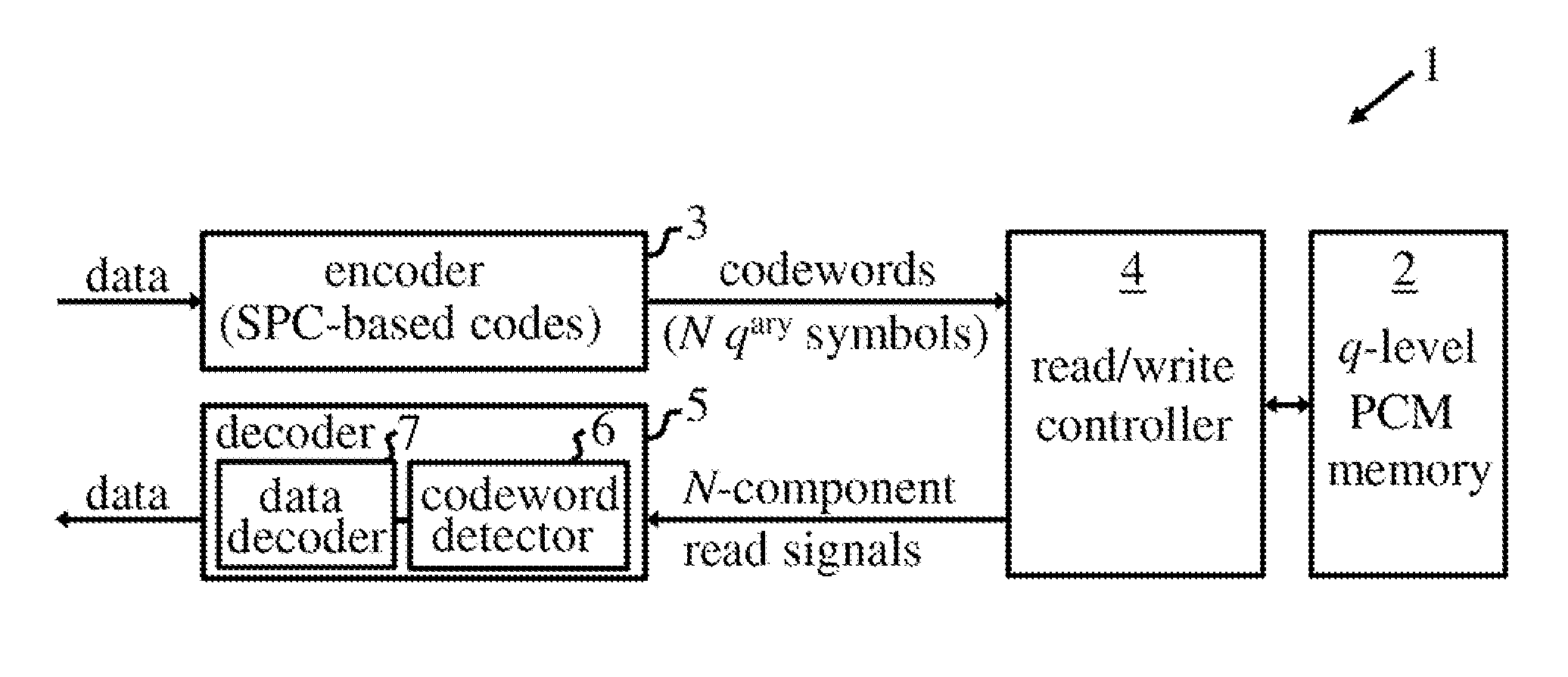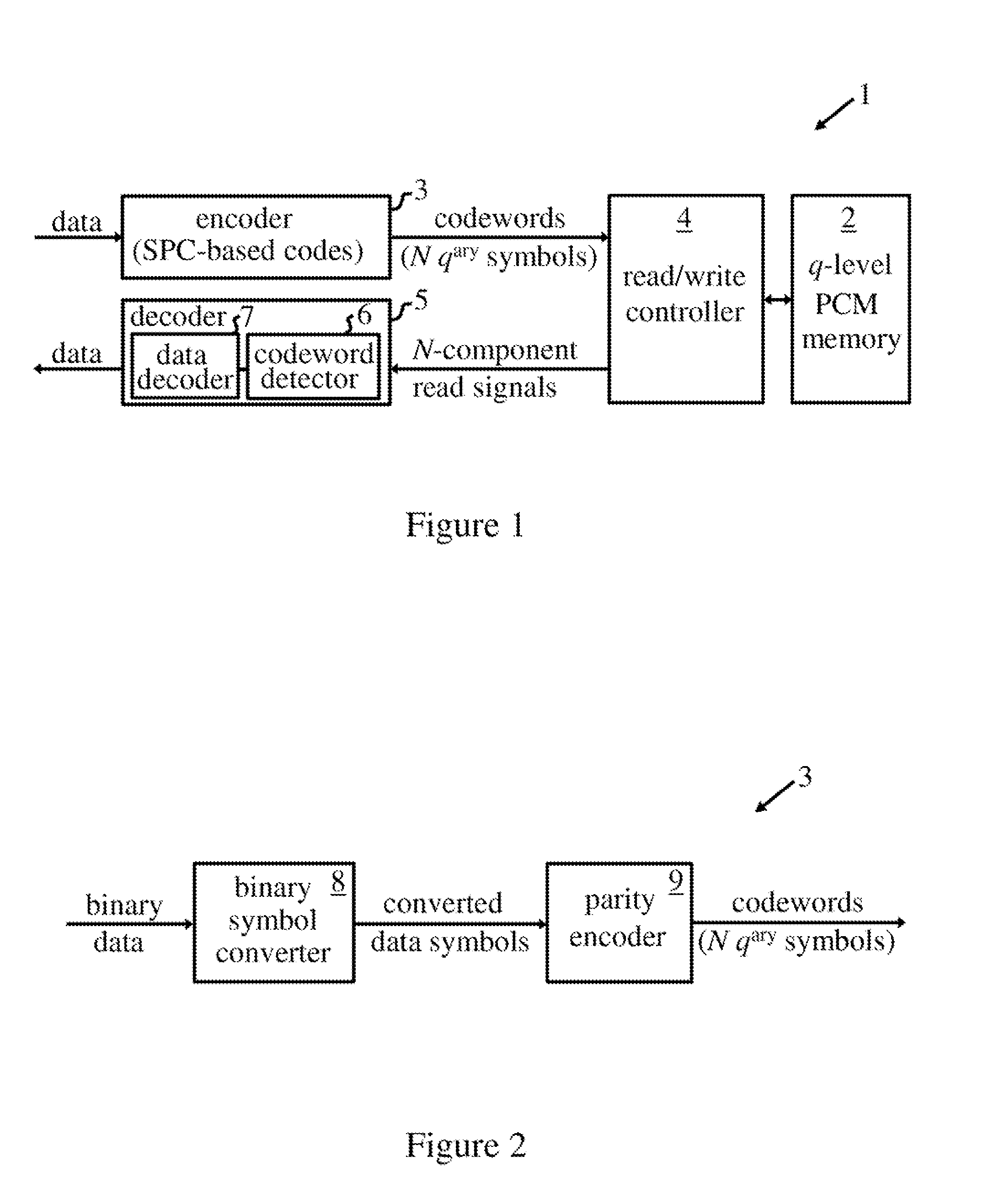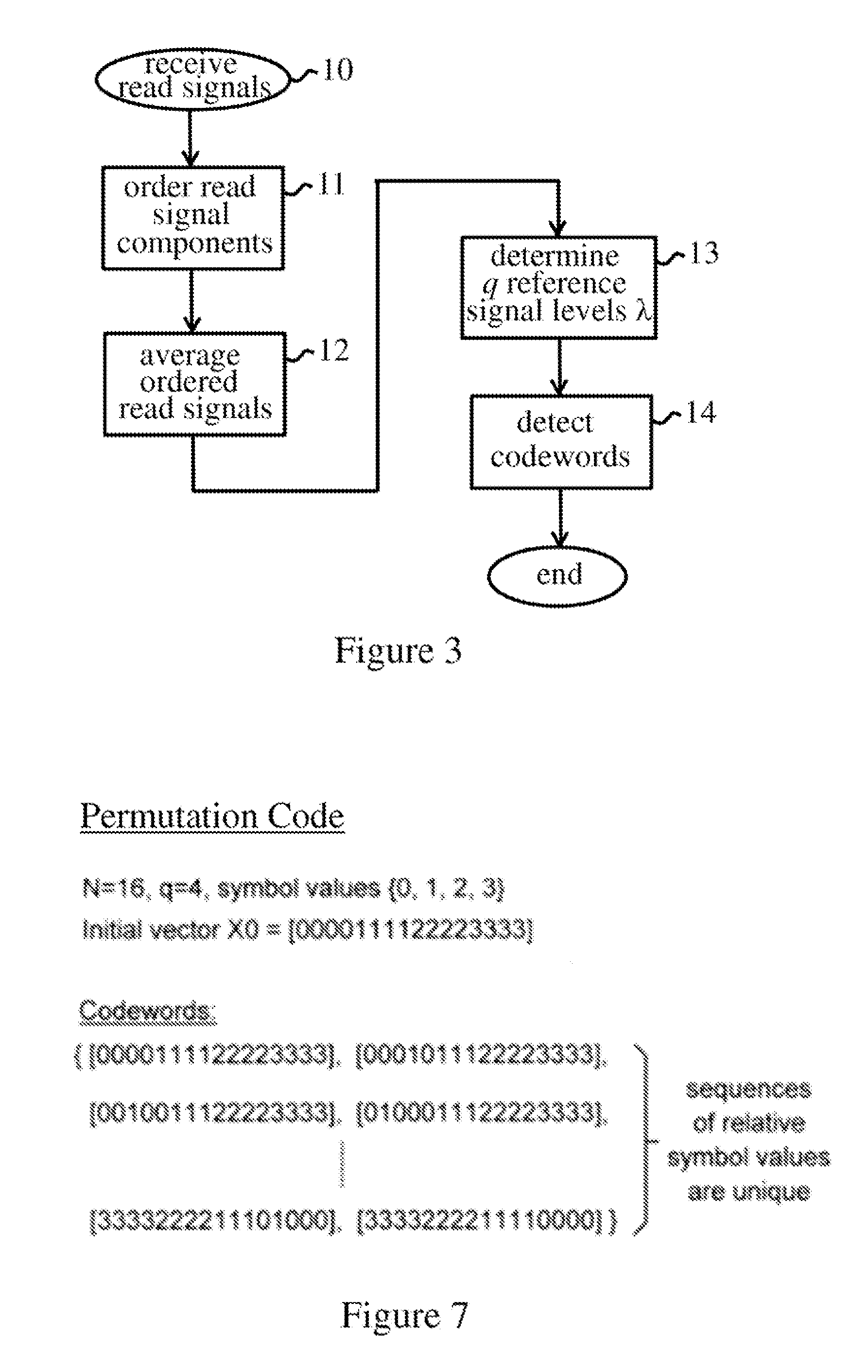Read/write operations in solid-state storage devices
a solid-state storage device and read/write technology, applied in error detection/correction, redundant data error correction, instruments, etc., can solve the problems of physical quantity measured during cell readout, electrical resistance in pcm devices, affecting readback values of neighboring levels, and affecting reliability, so as to simplify decoding, simplify the encoding, and increase the complexity of the encoder
- Summary
- Abstract
- Description
- Claims
- Application Information
AI Technical Summary
Benefits of technology
Problems solved by technology
Method used
Image
Examples
Embodiment Construction
[0037]FIG. 1 is a simplified schematic of a solid-state storage device, here a phase-change memory (PCM) device 1, embodying the invention. The device 1 includes phase-change memory 2 for storing data in one or more integrated arrays of multilevel PCM cells. Though shown as a single block in the figure, in general memory 2 may comprise any desired configuration of PCM storage units ranging, for example, from a single chip or die to a plurality of storage banks each containing multiple packages of storage chips. Device 1 includes an encoder 3 for encoding input data in accordance with an SPC-based encoding scheme discussed further below. A read / write controller 4 controls writing of codewords in memory 2 and subsequent reading of memory cells to obtain read signals corresponding to codewords. A decoder 5 for processing the read signals comprises a codeword detector 6, which detects codewords corresponding to the received read signals, and a data decoder 7 which decodes the codewords ...
PUM
 Login to View More
Login to View More Abstract
Description
Claims
Application Information
 Login to View More
Login to View More - R&D
- Intellectual Property
- Life Sciences
- Materials
- Tech Scout
- Unparalleled Data Quality
- Higher Quality Content
- 60% Fewer Hallucinations
Browse by: Latest US Patents, China's latest patents, Technical Efficacy Thesaurus, Application Domain, Technology Topic, Popular Technical Reports.
© 2025 PatSnap. All rights reserved.Legal|Privacy policy|Modern Slavery Act Transparency Statement|Sitemap|About US| Contact US: help@patsnap.com



